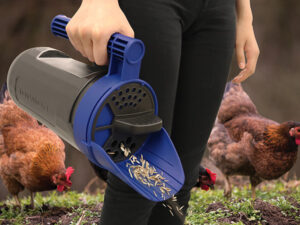
Seeding in October – Fall is by far and away the best time of the year to successfully overseed lawns. Soil temperatures are warm relative to air temperatures, so seed germinates quickly and young plants establish quickly. Spring seeding is seldom successful. It interferes with other important lawn work and will thin significantly if the summer weather turns hot or dry. The key to success is to get the seed to germinate this fall. Cool weather seeds will germinate in soil temperatures as low as the high 40s. Lawn Depot’s seed mixes (Survivor 80/20 and Survivor II) and blends (Evergreen and Dixie Green) will germinate into November in Bucks County. Once the seed has popped this year, it will develop roots disproportionately to its blade growth until the ground freezes. Then, next spring, when the soil warms, immature seedlings will establish into deep green, thick turf.
Broadleaf Weed Control in October – We encourage all homeowners who care about their lawns to do broadleaf weed control in the fall. This will ensure that your lawns are weed-free next spring. If you don’t do weed control this fall, you’ll have some to lots of weeds next spring. And if you want to do a weed control application this fall and still seed, you’d better hurry. You MUST wait 2 weeks after herbicide application before seeding, and you’ll want to get to the seeding at least by the early part of November. So, if you still want to do both, get to it immediately. Either treat the whole lawn (lots of weeds), or at least walk the whole lawn with a tank sprayer and spot spray weeds (fewer weeds) as you see them. Remember to avoid spraying weed control onto seeded areas and avoid new grass until it has been mowed 2-3 times.
Fertilizing Lawns in October – It is key that any lawn fertilizer applied in October not be the last feeding of the year. We strongly recommend two fall feedings for all lawns: early fall AND late fall. Of the 2, the late fall WINTERFEAST feeding is by far the more important for the lawn. It will subtly green the lawn before dormancy, but is primarily to promote root growth after the above-surface turf has gone almost dormant. This will keep the lawns green until the ground freezes, will stimulate deeper and denser root growth this winter, and will green the lawn early next spring without pushing lots of top growth. Having said that, and if you haven’t yet fed your lawn this fall, you should either feed it right away, with our early fall fertilizer (16-2-3) and feed again, with WINTERFEAST fertilizer after Thanksgiving, OR withhold feeding until late October or early November, and then apply your WINTERFEAST fertilizer.
Liming and Core Aerating – Dense, acidic soils should be limed and core aerated regularly if they’re going to enable you to grow healthy, deep-rooted lawns. Core aerating opens the soil to water penetration, to deeper roots, and to denser lawns. Annual liming reduces soil acidity, which, in turn allows the nutrients in fertilizers to be more readily available to the grass plants. The Lawn Depot encourages both of these activities each and every year. If you don’t have the time or the inclination to do them yourselves, call us for an estimate on having our Turf Management group do it/them for you.
Mowing and Leaf Removal – Do not put mowers away yet. The grass is still growing, and will continue to grow for at least another 6-8 weeks, albeit less fast as temperatures fall. Our objective with lawns is to have all lawns mowed closely (2.5”-3”) when they go dormant for the winter season. So, keep mowing every week to ten days until after Thanksgiving. If grass is long when winter sets in, the late falling leaves and snow fall will mat the grass down and encourage dormant diseases that can result in an early spring mess. Another reason to continue mowing through November is that leaves will continue to fall through November, which can be detrimental to newly established and mature grass plants. By mowing regularly (at least every 7-10 days) you’ll be chopping up the leaves that fall or blow onto the lawn, thus keeping the turf upright, tight and clear.
